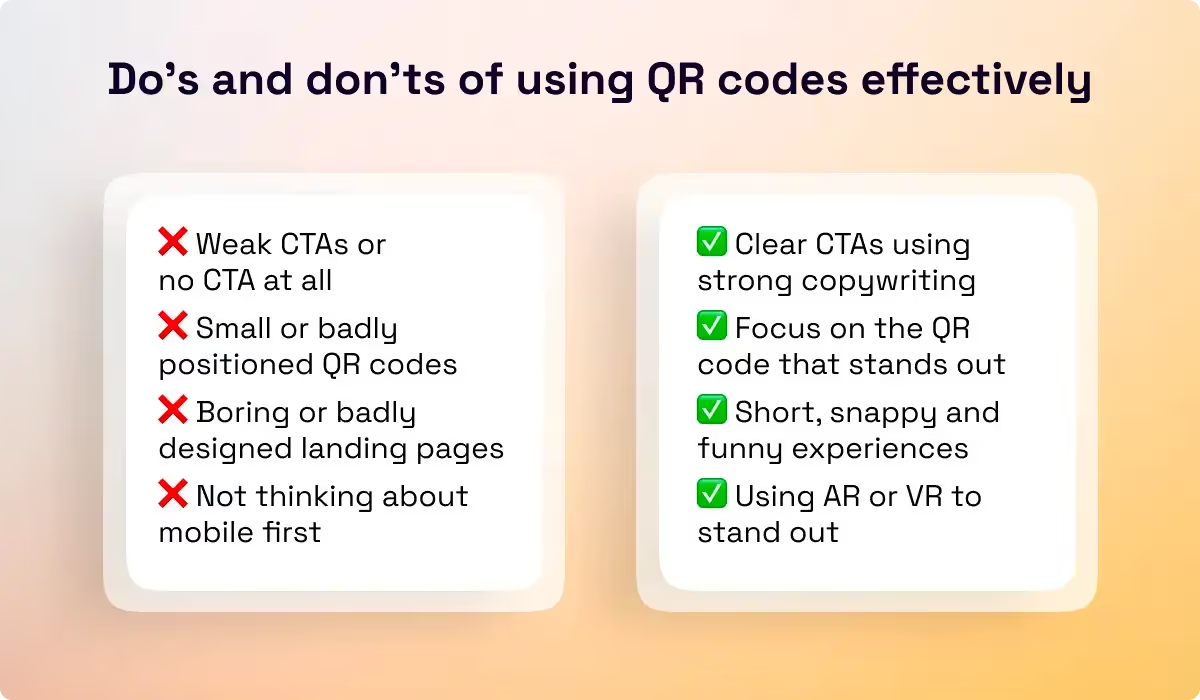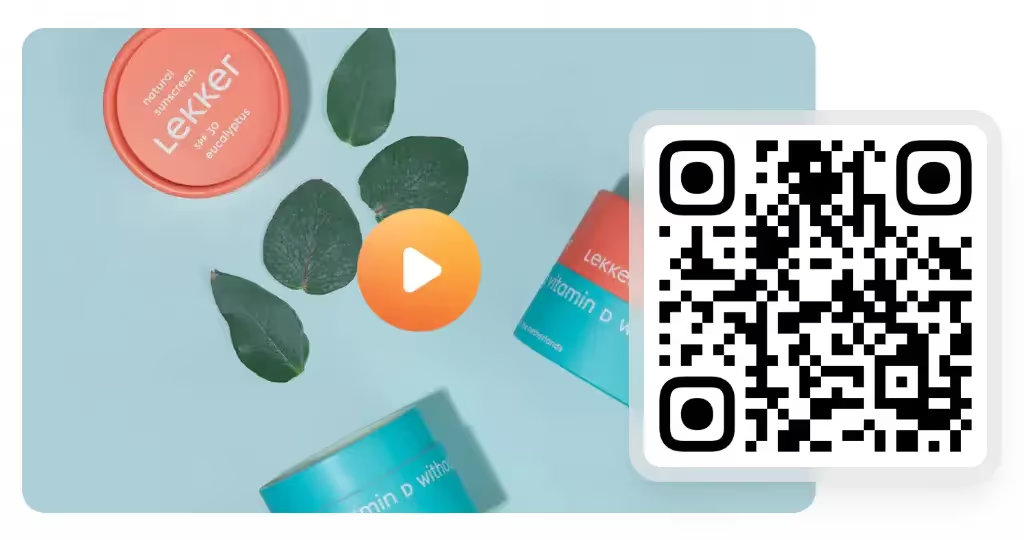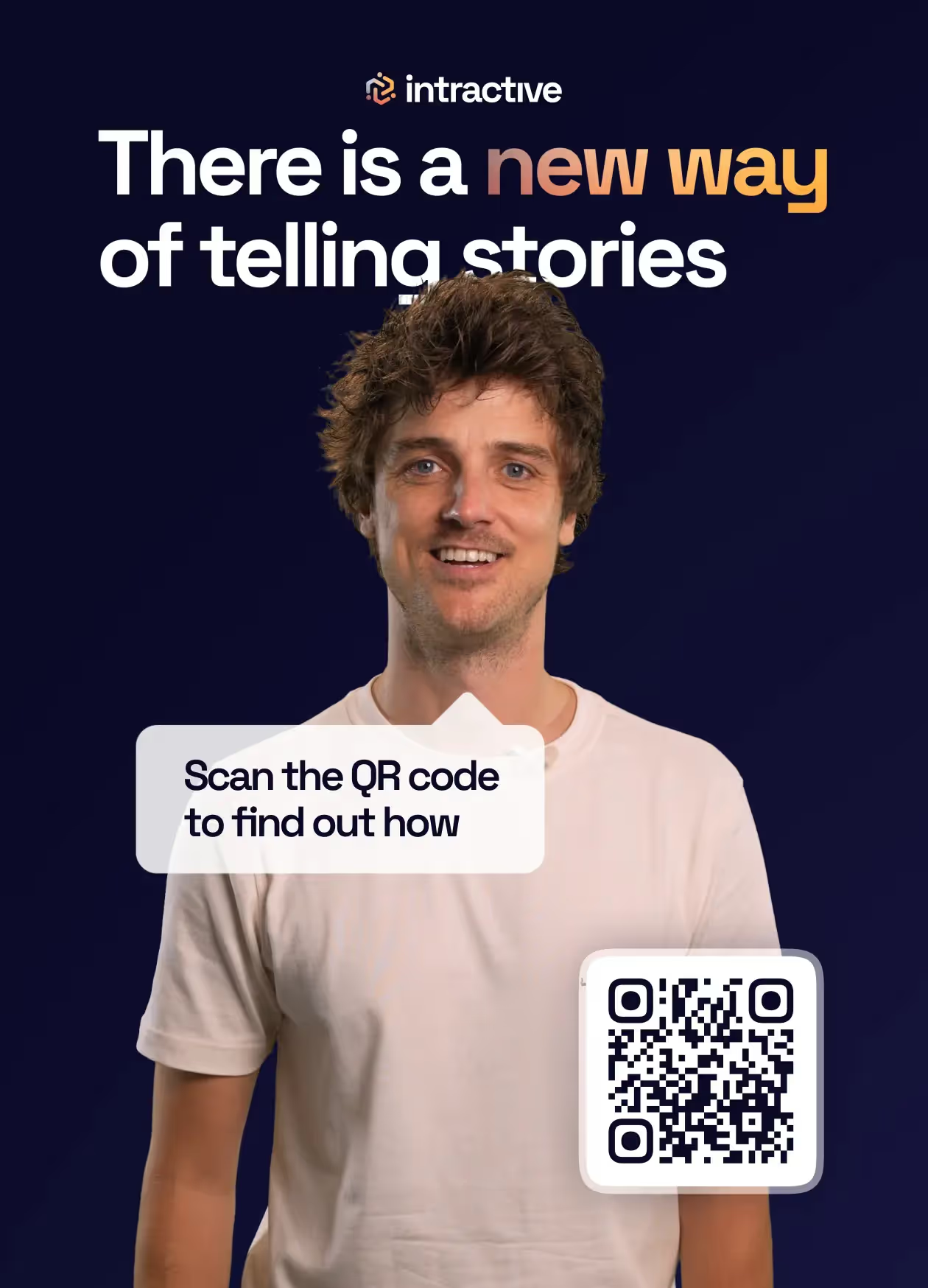They pop up more and more: branded QR codes. On product packaging, OOH campaigns and even TV commercials.
QR codes already exist since 1994, but thanks in part to the COVID-19 pandemic, the branded QR code is now hotter than ever before. And chances are big that QR code experiences are becoming even more important in the marketing space.
The importance of branded QR codes in a cookie-less era
The cookie-less era will be upon us in 2024, making the game of marketing a little harder. Our take: branded QR codes will be an important solution to this problem.
Due to the disappearance of third-party cookies, the emphasis on retargeting and cross-platform advertising will disappear. This means there will be more emphasis on first-party data gathering and providing good user experiences.
Storytelling and engagement become more important
Storytelling will become increasingly important, because you have fewer touchpoints with your potential customer. You basically have less time to tell your full story.
But if you can create engaging QR code experiences, you have the opportunity to grab and hold the attention of your target audience. You need to do this right, however, and there are many pitfalls that even the biggest brands fall into.
The do’s and don'ts of branded QR codes
To make sure you don’t make the same mistakes other brands have made before you, we’ve decided to give you a quick overview of the do’s and don’ts of branded QR codes. These are a few tips and tricks and also some examples and best practices.
❌ Bad QR code placement and call to action
What you see when you’ve scanned a QR code is important. But first, you’ll need to convince people to scan it in the first place. Many marketers ruled out QR codes because they tested them and they didn’t seem to work. Almost nobody seemed to scan the codes.
And that’s exactly where most marketers make their first and biggest mistake. Creating a small QR code somewhere in the right bottom corner without a clear call to action (CTA) simply doesn’t work.
We always recommend just using yourself as a guinea pig. You buy a product or walk past an OOH campaign, and you spot a QR code. Consider: would you scan it, if you weren’t even sure why you should? And what if you couldn’t even find the QR code in the first place?
Make the QR code an important part of your creative asset. It’s the gateway to your story, treat it like this. Make it a centerpiece and use CTAs that trigger curiosity, like:
- “Scan to explore our story”
- “Discover why you need this”
- “Play to win unique prizes”
❌ Boring landing pages after scanning a QR code
What we see very often is that, after scanning a QR code, you land on the homepage or a simple product page. These dull landing pages will not create the effect you want.
You need to take into account most people scan these codes on the go, or while they open a product. They don’t want to spend minutes reading long text or watching boring corporate videos. They want to know if it’s worth their time within the first few seconds.
You need to grab the attention with a slick short full-screen video, or create engaging and interactive content to make sure you can hold the attention. You want to be able to tell your whole story and create fans.
Make use of interactive storytelling tools (like Intractive) to create an interactive story that is fun, engaging and compelling. And never share information users don’t need to know at that specific moment. Always keep it short and snappy. Like content on Instagram or TikTok.
❌ Gathering personal data right after scanning
Privacy is important and landing directly on a form where I need to leave my personal data is simply a no-go. Of course you can collect data, but first ‘give’ before you ‘ask’.
Create a QR code experience that’s interesting and afterwards ask for names and/or email addresses. If you’re able to create a positive emotional connection through your story, people are more willing to provide you with their details.
And always be clear about why you want those details. Be honest about it. If you want to send me a newsletter, mention it. If you want to give me a discount, mention it. Be transparent, it works.

✅ Use the power of gamification [+ 3 examples]
The whole goal of your QR code is to give some in-depth information and drive users to take certain actions. Gamification can be a very powerful tool to create the engagement you need to achieve this.
Using gamified elements like quizzes, polls, or just a sense of purpose can trigger the dopamine reward system. Gamified marketing is used in many ways, but can also be misused. Here are 3 totally different gamified QR code experiences, for your inspiration.
1. QR code packaging for The Lekker Company
The Lekker Company is a brand with a mission. They want to eliminate harmful ingredients in our self- and skincare products. They created this amazing interactive story introducing users to ‘The World of Lekker’.

2. QR code commercial during superbowl coinbase
Coinbase launched a TV commercial during the Super Bowl break in the US. Paying 7 million to get this on air for 1 minute and including a 3 million dollar give away.
They broke many of the do’s and don'ts in this article, but, in the end, curiosity for the old school pong game was enough. This QR code commercial boosted app downloads by 279%.
3. QR code waiting game at Schiphol Airport (Amsterdam)
Schiphol Airport wanted to try out the potential of QR codes in their OOH displays. They partnered with Intractive and created the waiting games: three mini games that could be unlocked by scanning a QR code on the OOH screens at the gates.
Within two weeks, these got almost 3.000 scans and an average screen time of 9 minutes. Let’s just say: “location, location, location” 😉
✅ Use the power of value-driven storytelling
Millennials and Gen Z are value-driven generations. They want brands to be sustainable, inclusive, show leadership, etc. They can become loyal customers if their personal values match the values of your brand.
Showing your values in an engaging way can be very powerful. However, be careful of greenwashing. Below is an example in the Netherlands of Shell (October 2023).
They created an ad in a newspaper for employer branding with a QR code (bad placement in the left down corner) stating that you could work for Shell to create wind parks on sea.
However, directly next to it you’ll find an article on how Shell is firing up to 200 people in the sustainability department of the company.

Placing a QR code experience about sustainability next to a headline stating you’re slashing sustainability jobs. Yikes.
✅ Look into AR and VR possibilities, but don’t overdo it
Nowadays, innovation around technologies like augmented and virtual reality is going really fast. Augmented reality can be very interesting for QR codes. It can create a WOW-factor straight at the outset of the experience.
We recommend looking into the possibilities, but make sure your AR / VR is easy to use. Because using innovative tech also means that at least some part of your audience probably doesn’t understand how to use it. Let’s try out if this is the case for you, as a reader.
Check out the postcard below. Scan the QR code, give permission to your camera and hold it in front of the card. It will come alive and start an interactive experience.

How did that go? Could you imagine your specific audience doing the same successfully?
Summary: do’s and don'ts of branded QR codes
Branded QR codes can be very powerful if used correctly. And the need for QR code marketing becomes bigger due to the cookie-less era that is coming. Nevertheless, the effectiveness is very dependent on a few things.
- Good placement: make the QR code an central part of your asset
- Triggering CTA: make sure you trigger curiosity with a clear CTA
- Landing page: make sure they don’t land on a standard home or product page
- Data gathering: don’t start asking personal data straightaway
- Gamification and storytelling: look into ways to make the experience fun and compelling
- AR and VR: look into the possibility of creating a WOW-effect, but only if it really helps
Do you want to know more about creating QR code stories with Intractive, just schedule a demo.








